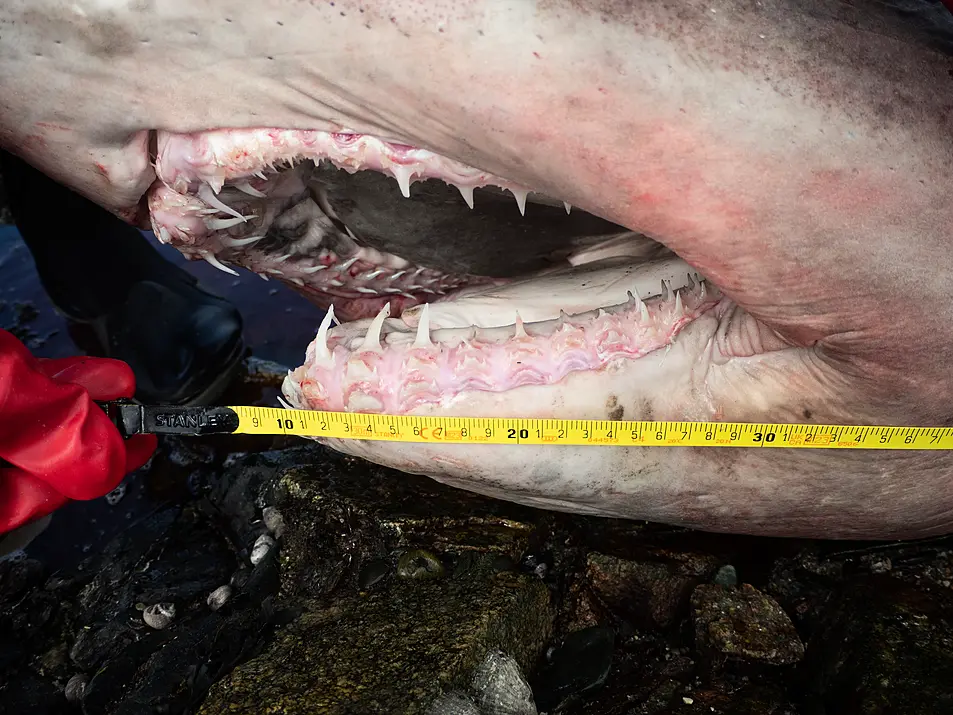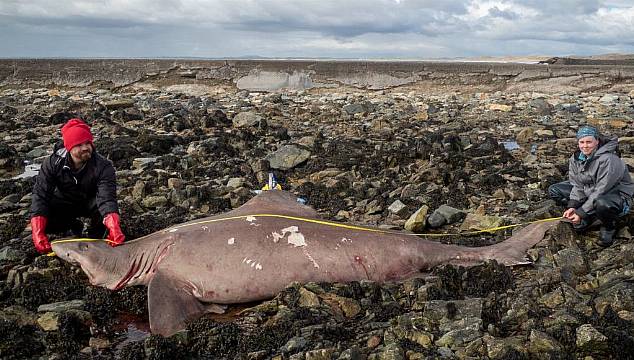A rare shark washed up on the shores of Co Wexford, in what scientists believe to be the first official record of the species in Irish waters.
The smalltooth sand tiger (Odontaspis ferox) is rarely seen by humans as it normally lives offshore in waters more than 100m deep.
At 14 feet long, the female shark discovered in Wexford is at the upper end of the size limits for the species.
Scientists at Trinity College Dublin said they were surprised to see it in Co Wexford, as it was thought to be distributed only as far north as the Bay of Biscay in the eastern Atlantic Ocean.
Shark biologist Dr Nicholas Payne, an assistant professor at Trinity College Dublin’s School of Natural Sciences, was notified of the stranding by a Swiss tourist who happened across the shark while walking on Saturday.
He said he “couldn’t believe it” when he was notified.

“I knew we had to get down there urgently to sample this rare animal,” Dr Payne said.
A team of researches from Trinity College and University College Dublin worked against the incoming tide to take biological samples from the shark in a bid to discover why it died.
“We will now do a number of tests to try to learn what might have caused this to happen and also to learn more about this species in general,” Dr Payne said.
Another shark of the same species washed up in southern England two weeks ago.
“To see a second one here so soon after is a little concerning,” Dr Payne added.

The smalltooth sand tiger sharks are assessed as “vulnerable” by the International Union for Conservation of Nature.
Dr Jenny Bortoluzzi helped with the dissection and said the information will be “invaluable”.
“It’s also wonderful that a member of the public contacted us because it shows increasing awareness, and we hope this encourages more people to get in touch in the future should they come across something similar.”







